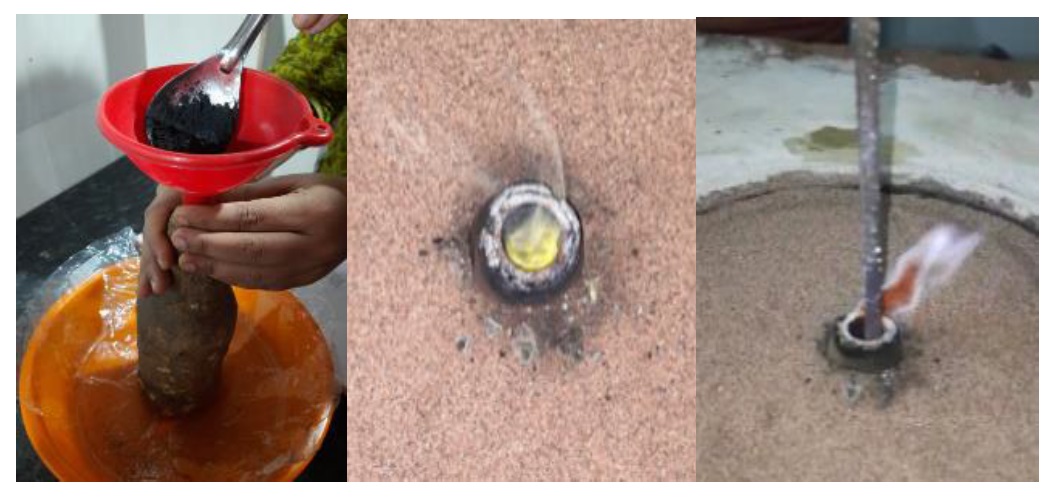Method of preparation of Kupipakwa Rasayana w.s.r. to Uttama Rasasindura - A multidimensional remedy
DOI:
https://doi.org/10.21760/jaims.v6i5.1446Keywords:
Uttama Rasasindura, Rasarajachintamani, Kupipakwa Rasayana.Abstract
Introduction: Original dimensions of Ayurveda are in built in the ancient compendia of Indian wisdom called Vedas. Rasasastra in ancient classical textbook shows the inclination in the usage of Parada was towards Dhathuvada and Dehavada which gradually turned its importance in Chikitsa. ‘Rasarajacinthamani’ is a compiled textbook of Rasasastra written in Malayalam language by Vadayattukotta K Parameshwaran Pillai. Uttama Rasasindura is explained in this textbook along with different types of Rasasinduras. Materials and Methods: The treatise Rasarajachintamani is reviewed for the specific formulation, Uttama Rasasindura. Contextual review of the used herbal as well as mineral drugs were done from Ayurveda pharmacopeia of India and text books of Dravyaguna Vijnana. The study has been carried out to lay down basic operating procedure for preparation of Uttama Rasasindura. Three samples were prepared by adopting the conventional method of Kupipakwa preparation. Results: Kajjali Nirmana as well as conventional Kupipakwa Rasayana Vidhi were carried out to prepare Uttama Rasasindura (URS). All the three batches of URS prepared were resulted in average 16½ hrs of procedure with an average peak temperature of 682.80°C. Discussion: Comparing to formulation Rasasindura explained (eg: In Rasatarangini etc.) this preparation took lesser time duration with an average final yield of 40.04%. It has been claimed that Parada without Gandhaka Jarana is not capable to cure diseases. Sagandha Bahirdhuma method is adopted for Uttama Rasasindura. For this purpose, some effects have been carried out regarding the heating pattern and interpretation of Mridu, Madhyam and Tivra Agni in terms of temperature etc. It might happen due to the Agnisamskara.
Downloads
References
Srimadsayana Madhavacarya, Sarvadarsana Sangraham, (Internet) Digital Library of India Item 2015.311086. Chapter 9/verse 63-66;205,.206 p. Available from:https://archive.org/details/in.ernet.dli.2015.311086/page/n145
Vadayattukotta K parameshwaran Pillai ,Rasa rajacinthamani.1950, Thiruvananthapuram: Reddyar press and book dipo ;. p.24-31
Shri Sadanandasharma: Rasa Tarangini [hindi], commentory edited by kashinathShastry; 11th ed.; New Delhi;Mottilalbanarasidas. 1979;5th taranga, verse 45.; p 83
Vadayattukotta K Parameshwaran Pillai, Rasa rajacinthamani.1950, Thiruvananthapuram: Reddyar press and book dipo ;. p 24-31.
Shri Sadanandasharma: Rasa Tarangini [hindi], commentory edited by kashinathShastry; 11th edition; New Delhi; Mottilalbanarasidas. 1979,Chap.5Ver.43 ,p.83.
Acharya Bhagvata Govinda Pada, Rasahridayatantram with Mugdhavabodhini Sanskrit commentary and Subodhini Hindi Vyakhya, Varanasi: Chawkhamba publications;2003;chapter 2:verse 1-12, p 24.
Acharya sri Madhava. Ayurveda Prakasha. (Arthavidyotini and Arthaprakasini Sanskrit and Hindi commentaries).vaidyavacaspathisri Gulrajsharma mishra 37thed;. Varanasi: Chaukhambha bharati academy;1999;chapter 2;verse26-29;p262,263.
Vadayattukotta K parameshwaran Pillai, Rasarajacinthamani.1950, Thiruvananthapuram: Reddyar press and book depot. ; p112.
Shastry kashinath, editor.Hindi commentary of Rasatarangini of Acharya Sadanandasharma. 11th ed.; Chap.5.Ver.14-20. New Delhi, Mottilal banarasidas. 1979Chap.4,ver.53-57; p 60-61
Shri Vagbhatacharya: Rasaratnasamucchaya [Hindi]. commentary by Dattatreya Anantha Kulkarni, New Delhi: Meharchandh Lechmandas Publications Chap.8,ver.5,
Shastry kashinath, editor.Hindi commentary of Rasatarangini of Acharya Sadanandasharma. 11th ed Chap.4,ver29-31.p52.
KR Khandelwal. Practical Pharmacognosy, Techniques and experiments, Edi.by Dr. Vrinda Sethi. Nirali Prakashan, p 23.7-23.10.















